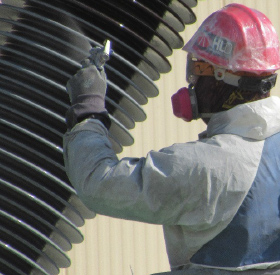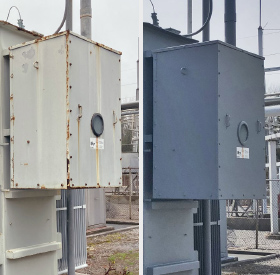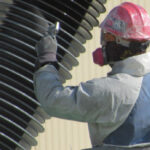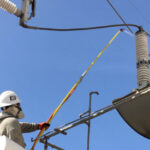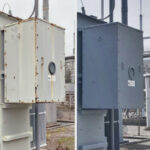It only takes one catastrophic animal outage to realize the significant threat wildlife poses to your electric utility equipment. Securing the electrical grid and protecting wildlife are crucial to mitigating both financial and social risks associated with outages and fines.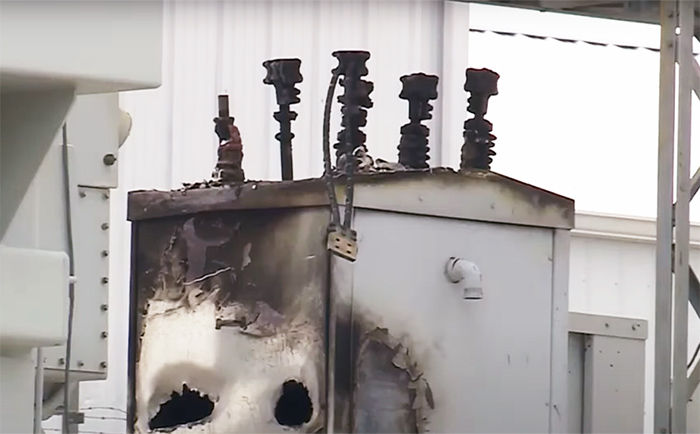
While identifying the most vulnerable areas might seem straightforward, an often overlooked next step is selecting the appropriate material for your station’s protection, which can greatly impact the effectiveness of your plan.
This guide will explore the factors involved in selecting the material for your wildlife guards, essential for safeguarding transformer bushings, insulators, sensors, capacitors, and other substation or distribution equipment from animals. By the end of this guide, you’ll be well-informed about which material is best suited for your utility wildlife protection plan.
Material Composition
The choice of wildlife protection for your equipment should take chemical composition into account, due to its impact on the desired protective traits' effectiveness and longevity.
Polypropylene
Plastics such as polypropylene, polyethylene, polyvinyl and polyurethane are synthetic polymers, mainly consisting of carbon atom chains derived from petroleum or natural gas. Their creation involves polymerization, where small monomer molecules combine to form lengthy chains. The inherent rigidity of plastics enables complex features, and various additives can improve specific properties where base plastic might fall short, enhancing functionality and applicability in applications.
Polysiloxane
Silicone is a synthetic polymer in which silicon atoms replace carbon in the backbone of the molecular structure, giving it unique properties including remarkable thermal stability, resistance to elements and UV light, and water repellency. In its manufacturing process, silicone undergoes a series of chemical reactions, where silicon is combined with oxygen to form a flexible, durable material. Additive fillers can enhance certain characteristics to improve performance.
Installation and Removal
It is essential to evaluate your equipment configurations, voltages, lineman availability, scheduled outages, and typical weather conditions before purchasing wildlife covers.
Plastic animal guards are rigid, allowing complex design features such as snaps, hinges, teeth and loops to improve installation and even deploy or remove while the system is hot. A downside to the rigidness of plastic is that during install or removal, these intricate parts are often delicate and can crack, break, fall off and render the cover ineffective or unusable against wildlife. Using electrical tape or zip ties to fasten covers may provide a temporary extension in lifespan but isn’t a long-lasting solution against wind and animal tampering.
Silicone animal guards, known for their softness, flexibility, and simple design, allow for on-site modifications to accommodate unexpected configurations. They employ a dependable push-pin closure system for secure fastening, and removal is just as easy, simply by pulling the cover apart by hand. Installers can trim the covers and introduce new fastening points, ensuring a custom fit to the connection. However, a drawback is that installing these covers requires de-energizing the system.
Elemental and UV Resilience
The performance of your wildlife protection depends on geographical location, including proximity to the coast or corrosive industrial areas, requiring durability to withstand harsh conditions.
The main disadvantage of plastic wildlife protectors is their relatively short lifespan, due to plastic’s vulnerability to ultraviolet and elemental degradation, despite the inclusion of stabilizing additives. Within weeks of environmental exposure, plastic starts to weaken, deform, crack, pit, and become brittle, and it typically fails to endure beyond a few years in service. Fasteners are often the first to deteriorate as these are not made with the same material as their main counterpart. This makes plastic a poor choice when longevity is a concern in your wildlife protection strategy.
Thanks to its silicon backbone, silicone wildlife protectors excel in environmental resilience, effectively resisting salt, dust, pollutants, and UV radiation while preserving their properties for decades. Tests reveal that even after 14 years in service, there was no noticeable decline in dielectric strength, flexibility, or tensile, fully complying with the design standards of IEEE 1656.
Thermal and Flame Resistance
Unexpected situations may subject your animal protection covers to extreme temperature fluctuations, fire, or a smart animal bypassing the cover, leading to phase contact. It's crucial that the cover does not exacerbate equipment damage and instead helps protect your assets.
Although plastic remains stable at normal temperatures, its carbon-based structure can start to deform with temperature fluctuations. As temperatures approach 320°F, most plastics begin to melt, potentially dripping hot liquid and risking damage to any equipment below.
Silicone’s composition enables it to retain its form and physical properties across a broad temperature spectrum, to over 500°F, withstanding severe cold and heat. In the event of a fire, silicone doesn’t melt but instead chars and decomposes, potentially safeguarding your gear during catastrophic events.
Contamination
In harsh environments, your distribution, substation, or transmission equipment faces a higher risk of contamination, potentially turning your wildlife guards against you. The accumulation of dirt, debris, and animal waste could result in tracking, arcing, or even flashover, significantly threatening your grid reliability.
Plastic wildlife covers, typically infused with additives to reduce debris build-up and advertised as non-tracking, develop surface flaws like grooves and indentations as they age outdoors. These imperfections attract contaminants, leading to often unnoticed accumulation until it causes cover degradation and risks cover and equipment failure.
Silicone wildlife covers are smooth, slippery, and flexible, with low surface energy that prevents dirt and debris from adhering. This design facilitates a “self-cleaning” effect through hydrophobicity. Thus, rainfall reliably removes contaminants, reducing the risk of tracking, arcing, or flashover, and keeps the silicone clean and functional.

